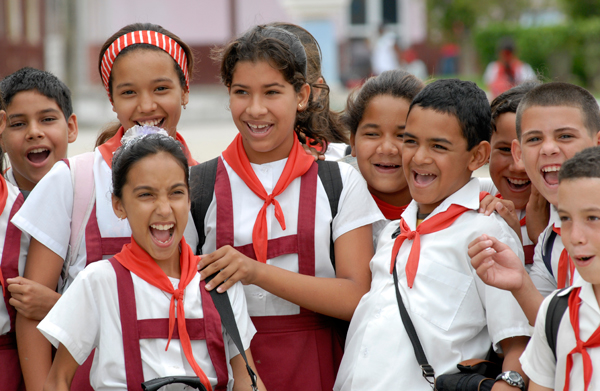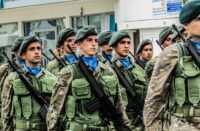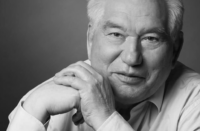The Cuban Revolution did not begin as a socialist revolution; in fact the original Cuban communist party, the PSP (People’s Socialist Party), denounced the attack on the Moncado Barracks in 1953 as a “putsch,” and, while engaging with the rebels during the guerilla campaign, it did not fully align with them, believing instead in building mass support in the cities.
After the overthrow of Batista, the PSP and the 26th of July Movement moved closer together and eventually formed the Communist Party of Cuba.
The Communist Party, then as now, is not an electoral party; it does not stand candidates in the national, provincial and municipal elections held regularly in Cuba. Its members, however, do work within the mass organisations, such as the Federation of Cuban Women and the Committees for the Defence of the Revolution, which have a presence in nearly every Cuban street and tower block. This has made the Communist Party keep its guiding role within society, without a reliance on electoral success—something to ponder on for those in Ireland who maintain illusions about a parliamentary road to socialism.
Education is one of the pillars of the Revolution, with all education provided as a right to all citizens, free of charge. Cuba spends more of its GDP on education—13 per cent—than any other country in the world. It also leads the world in medical care, with the emphasis on preventive medicine, provided by doctors who live among the people they serve.
Women make up a majority of parliamentarians, the second-highest proportion in the world. More than 60 per cent of university students are women, as are the majority of professionals. This is assisted by state-subsidised abortion and child services as well as education programmes that make men share the domestic duties, such as cleaning, cooking, and looking after children—something that has allowed Cuban men also to break free of the negative effects of traditional roles.
These achievements make the Cuban standard of living very attractive to those living in the Global South. Travelling through Cuba, one will not find people living in overcrowded barrios, run by armed gangs peddling drugs and prostitution—in fact drugs of all kinds, including marijuana, are illegal; instead one will find people content to socialise in their communities, with children playing even into the late evenings in the back streets of Havana, free from concern. This is in stark contrast to the everyday life of others in the Caribbean and elsewhere.
Cuba, a small country of 11 million people, has always lent the hand of friendship to other peoples. Cuban internationalist volunteers were instrumental in preventing apartheid South Africa and the West from defeating the national liberation movements in Angola and Namibia, with the Cuban-led military victory at the Battle of Cuito Cuanavale being a turning-point in that conflict and contributing to the downfall of apartheid. Cuban medical volunteers keep up that tradition, whether it be those who took part in Operation Miracle in Venezuela or those who assisted in treating Ebola victims in Africa.
These achievements, impressive in any context, have meant that Cuba is a prime target of US imperialism, which has maintained an illegal blockade on the country since shortly after the Revolution. The blockade differs from an embargo, in that it prevents third-party countries from trading with Cuba, meaning that the importing of materials as diverse as oil and pencils is either extremely expensive or, in some cases, impossible.
The cost of the blockade is in the hundreds of billions, and prevents Cuba from achieving even more successes, not to mention depriving the world of Cuban expertise in the fields of health and education.
The linchpin in the transformation of the Cuban Revolution from a democratic to an explicitly socialist revolution was the experiences of the people in the democratic struggle itself, with the role of the United States in propping up Batista becoming more and more obvious, as was the role of the criminal Cuban bourgeoisie as a dependant on foreign capital.
The Agrarian Reform, one of the first major policies of the revolution, proved to be much more than a mere reform or tinkering with the system. It eliminated large landholdings and thus, to quote an article in Granma, the Communist Party’s daily paper, “led to greater transformations within the Revolution and, for some scholars, established its agrarian, anti-imperialist, democratic-popular character, since the awarding of land to those who worked it affected not only Cuban latifundistas [big landowners] but foreign owners of huge estates as well, especially from the United States.”
This was a transformative demand, which matched where Cubans were in their political consciousness but also allowed them to increase their standing in society and give them the confidence to challenge the system at its strategic weak points.
This allowed the revolution to combine political-economic demands with a patriotic position. It was the unfinished business of the Cuban War of Independence, which ended in 1898, and in keeping with the life of José Martí. It was the risen people who came from this struggle that endured the “Special Period” (the disastrous effects of the overthrow of socialism in the USSR and eastern Europe in 1989–91) and today continue to build a socialism that, while proud of its past, is looking to the future.
Successful revolutions are never-ending, and the Cuban Revolution does not plan to moderate any time soon.






